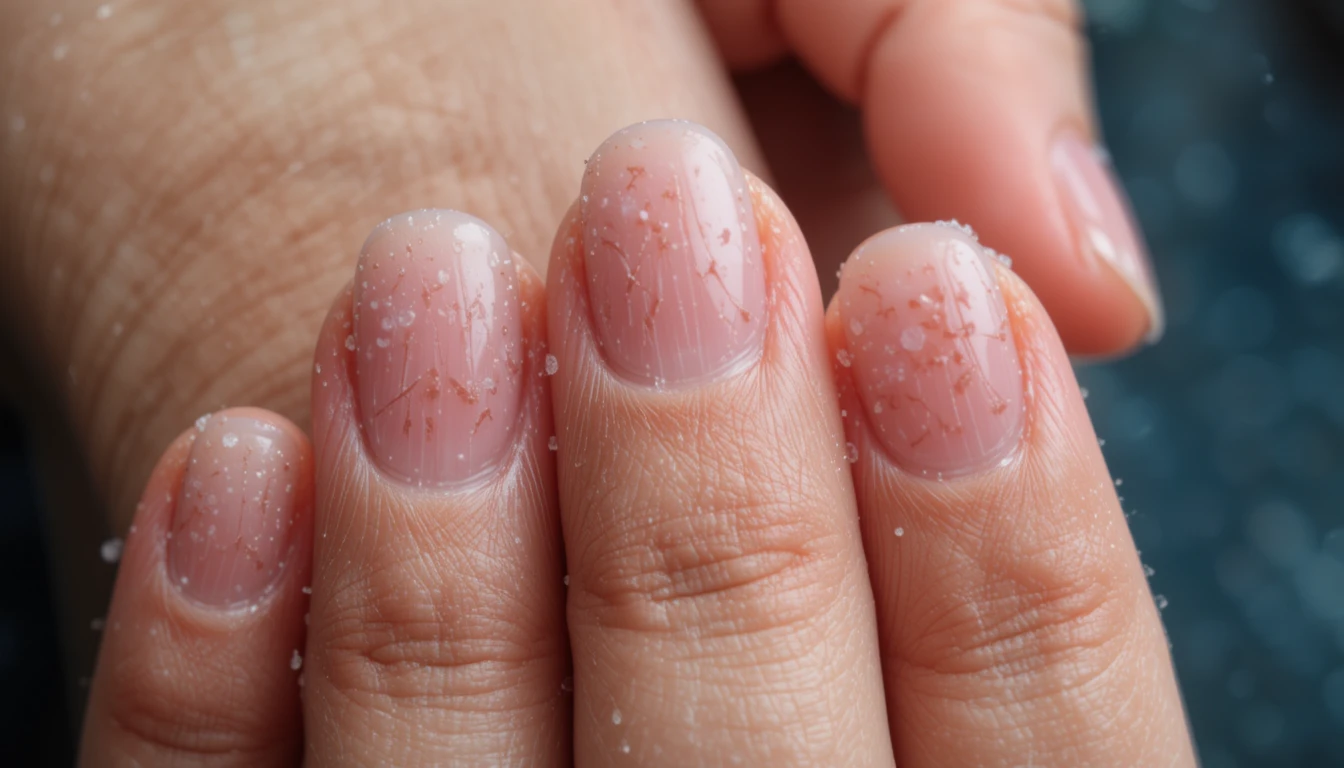Your nails are more than just a canvas for polish—they’re windows into your overall health. While we often focus on the aesthetics of our nails, their appearance, texture, and strength can reveal hidden health issues that might otherwise go unnoticed. Understanding what your nails are trying to tell you can help you spot early warning signs of illness, nutrient deficiencies, or underlying medical conditions.
In this article, we’ll explore how your nails reflect your health and what signs you should never ignore.
1. White Spots on the Nails
White spots on the nails, known medically as leukonychia, are often harmless and result from minor trauma, such as accidentally banging your finger. However, persistent white spots may indicate a zinc deficiency or even an allergic reaction to nail products. In rare cases, they can be a sign of fungal infection or more serious health conditions.
Tip: If the white spots don’t grow out or keep coming back, consult a doctor to rule out an underlying issue.
2. Yellow Nails
Yellow nails are commonly caused by staining from nail polish or smoking. But if the yellowing persists without any obvious cause, it could signal something more serious. Yellow nails can be associated with:
- Fungal infections
- Chronic respiratory diseases (like bronchitis)
- Diabetes
- Thyroid issues
In a condition called “yellow nail syndrome,” the nails thicken and grow more slowly, often accompanied by respiratory problems and swelling in the hands or feet.
3. Pale or White Nails
Extremely pale nails may be a sign of several serious illnesses, including:
- Anemia
- Heart failure
- Liver disease
- Malnutrition
If your nails appear unusually white or pale, especially at the base, it could mean poor blood flow or a lack of red blood cells. This symptom should be checked out by a medical professional.
4. Bluish Nails
When your nails take on a bluish tint, it’s often a sign of low oxygen levels in your blood. This may indicate:
- Lung problems such as asthma or chronic obstructive pulmonary disease (COPD)
- Heart conditions
- Circulatory issues
Bluish nails require immediate medical evaluation, as they could reflect a serious and urgent problem with oxygen delivery throughout the body.
5. Rippled or Pitted Nails
Healthy nails are smooth and even in texture. If you notice ridges, pits, or grooves on the surface, this could be a sign of:
- Psoriasis
- Eczema
- Inflammatory arthritis
These small dents or ridges may appear before the skin symptoms begin. A dermatologist can help you determine if an autoimmune condition is affecting your nails.
6. Cracked or Split Nails
Dry, brittle, or easily cracked nails are a common problem, especially among women. This can be caused by frequent exposure to water, cleaning agents, or nail products. However, consistently split nails may also indicate:
- Thyroid disease (especially hypothyroidism)
- Fungal infections
- Vitamin deficiencies, particularly biotin
If moisturizing and protection don’t help, it’s worth getting your thyroid function tested.
7. Clubbing of the Nails
Clubbing refers to nails that curve downward and the tips of fingers becoming swollen. It often develops over time and can be a sign of:
- Lung diseases (like lung cancer or chronic infection)
- Inflammatory bowel disease
- Cardiovascular disease
- Liver disease
Clubbing is a red flag and should be assessed by a healthcare provider promptly.
8. Dark Lines Under the Nails
If you notice dark lines running vertically under your nails, don’t ignore them. While sometimes they may be harmless pigmentation, in other cases, they could be a sign of:
- Melanoma, a dangerous form of skin cancer
- Bruising from trauma
If you haven’t injured your nail and a dark line appears, especially on one nail only, see a doctor immediately.
9. Spoon Nails (Koilonychia)
Nails that curve upward at the edges and look scooped out can indicate iron-deficiency anemia. Spoon nails may also be linked to:
- Heart disease
- Hypothyroidism
- Hemochromatosis (excess iron in the body)
This unusual shape is not just cosmetic; it’s a signal to get your iron levels tested.
10. Beau’s Lines
Beau’s lines are horizontal depressions or ridges across the nails. They can result from a temporary interruption in nail growth due to:
- Severe illness
- High fever (e.g., from COVID-19, pneumonia)
- Chemotherapy
- Zinc deficiency
If multiple nails have Beau’s lines, it usually means your body has gone through some kind of systemic shock.
When to See a Doctor
While some nail changes are harmless or cosmetic, others can be an early warning of serious health problems. Here are signs that warrant medical attention:
- Persistent discoloration
- Changes in shape or thickness
- Pain or swelling around the nails
- Sudden onset of abnormalities in multiple nails
How to Keep Your Nails Healthy
Caring for your nails can also promote overall health. Here are a few tips:
- Keep nails trimmed and clean
- Avoid biting or picking at cuticles
- Use gloves when cleaning or washing dishes
- Moisturize your hands and nails regularly
- Avoid harsh nail products with strong chemicals
- Take a biotin supplement if your nails are weak or brittle (consult your doctor first)
Final Thoughts
Your nails may not speak, but they certainly communicate. Paying attention to subtle changes in your nails could help you detect health issues early and seek timely treatment. Whether it’s a slight discoloration or a change in shape, don’t ignore what your nails are telling you.
Stay observant, stay healthy—and remember, beauty truly starts from within, including the tips of your fingers.
